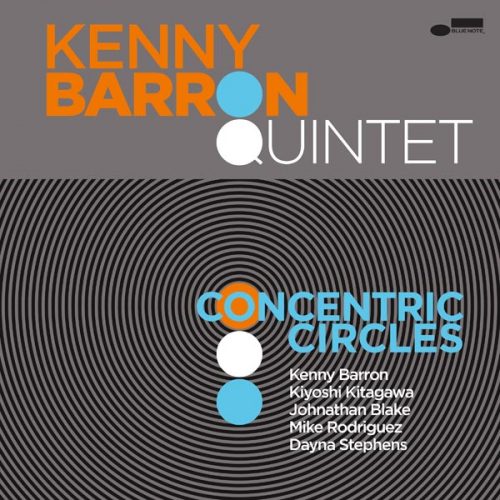A thorough examination of Kenny Barron’s musical accomplishments over a span of 50 years necessitates a discography of more than 200 pages. That’s because in addition to a distinguished career as soloist and leader he has served as one of the most dependable sidemen in all of post-bop mainstream modern jazz. More than 40 albums have appeared under his name, and his presence on literally hundreds of recordings by other musicians paints a panoramic picture of Barron’s lifelong devotion to the music.
Born in Philadelphia, Pennsylvania, on June 9, 1943, he took on the piano at the age of 12, with a little help from Ray Bryant’s sister, known today as the mother of guitarist Kevin Eubanks. Three years later, on the recommendation of his own big brother, saxophonist Bill Barron (1927-1989), he joined Mel Melvin’s rhythm & blues band. The aspiring pianist gained more experience while working with drummer Philly Joe Jones and saxophonist Jimmy Heath, as well as multi-instrumentalist Yusef Lateef in Detroit. Lateef’s album The Centaur and the Phoenix (1960) was Barron’s first modern jazz recording project — not as a performer (Joe Zawinul was the pianist on this date) but as composer and arranger.
His recording debut as an improvising artist took place shortly after he moved to New York in 1961 and cut the first of many albums with his brother, who often aligned himself with two graduates of the Charles Mingus Jazz Workshop, trumpeter Ted Curson and saxophonist Booker Ervin. A session in 1962 found Barron working with trumpeter Dave Burns, onetime member of sax and flute man James Moody’s exciting bop orchestra. Moody himself played an important role in Barron’s career, first hiring him to perform at the Village Vanguard, then bringing him into Dizzy Gillespie’s band. Barron stuck with Diz and Moody until 1966, performing at clubs and festivals on both coasts and touring through France and England.
Barron’s first great year of independent recording activity was 1967. In addition to co-leading a band with trumpeter Jimmy Owens, the pianist made records with trumpeter Freddie Hubbard and saxophonists Joe Henderson, Stanley Turrentine, Tyrone Washington, Booker Ervin, and Eric Kloss. Barron seldom recorded with anyone just once. His discography is thickly woven with inspiring names that recur with the regularity of intricate and colorful patterns that invite further scrutiny. Examples of artists who made a lot of records with Barron during the ’70s are sax and flute men James Moody and Yusef Lateef and bassists Ron Carter and Buster Williams, with people like Earl and Carl Grubbs, Marion Brown, and Marvin “Hannibal” Peterson expanding the range of expression beyond perceived parameters of predictability and accessibility. This healthy combination of freedom and discipline would continue to bear fruit as Barron worked regularly with saxophonists Chico and Von Freeman, John Stubblefield, Nick Brignola, and Stan Getz (with whom he toured extensively during Getz’s twilight years). The stylistic range continued to widen as Barron sat in with violinists Michal Urbaniak and John Blake, drummer Elvin Jones, and singing trombonist Ray Anderson.
During the ’80s, Kenny Barron composed the score for Spike Lee’s film Do the Right Thing, appeared on multi-performer tribute albums honoring composers Nino Rota and Thelonious Monk, and became a founding member (with Charlie Rouse, Buster Williams, and Ben Riley) of the definitive Monk legacy band, known as Sphere. The ’90s were an equally fruitful period for Barron, and found him working steadily for Verve, releasing such albums as People Time, Other Places, Wanton Spirit, and Night and the City.
By the turn of the century, Barron had established himself as both a piano virtuoso and journeyman artist who moved solo, duo, and large-ensemble recordings. In 2000, he released the Grammy-nominated Spirit Song, followed quickly by the release of Freefall, featuring violinist Regina Carter, in 2001. Barron then moved to a quintet setting for 2004’s Images. Four years later, he collaborated with West African guitarist Lionel Loueke on Traveler. Vocalist Claire Martin was the next beneficiary of Barron’s deft accompanist skills on her album Too Much in Love to Care, in 2012.
Barron then delivered several duo albums, pairing with bassist Dave Holland for 2014’s The Art of Conversation and vibraphonist Mark Sherman for 2015’s Interplay. In 2016, he returned to the trio format with Book of Intuition featuring bassist Kiyoshi Kitagawa and drummer Johnathan Blake. ~ arwulf arwulf
Aug 05
Kenny Barron
Birdland, New York United States
Aug 06
Kenny Barron
Birdland, New York United States
Aug 07
Kenny Barron
Birdland, New York United States
Aug 08
Kenny Barron
Birdland, New York United States
Aug 09
Kenny Barron
Birdland, New York United States







